21+ Sample Petty Cash Log and Forms
-
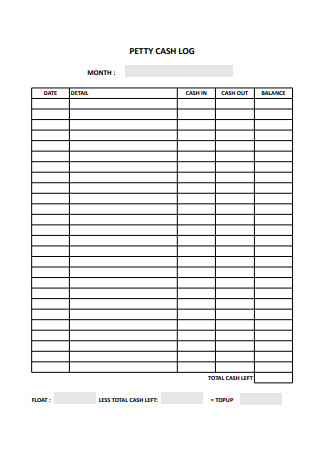
Petty Cash Log
download now -
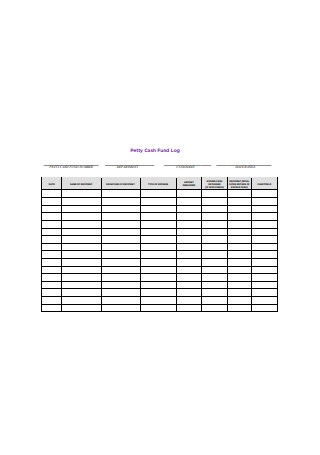
Petty Cash Fund Log Form
download now -
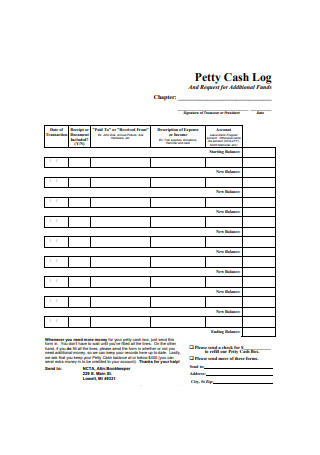
Petty Cash Log Form
download now -
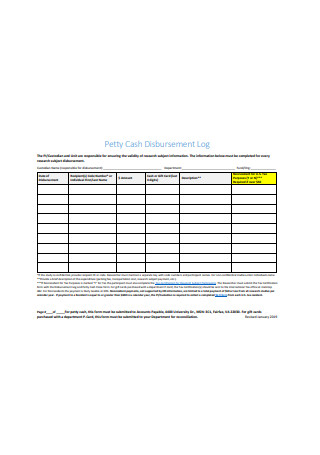
Petty Cash Disbursement Log Form
download now -
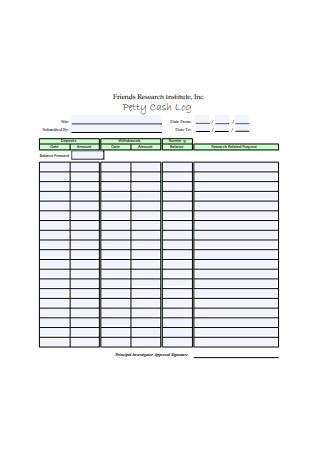
Petty Cash Log Format
download now -
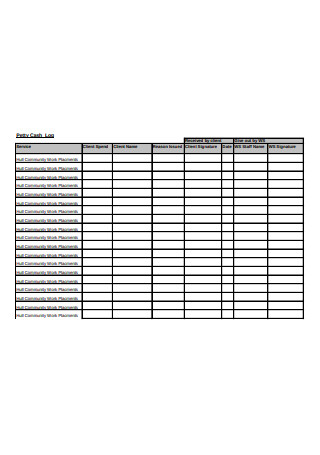
Sample Petty Cash Log
download now -
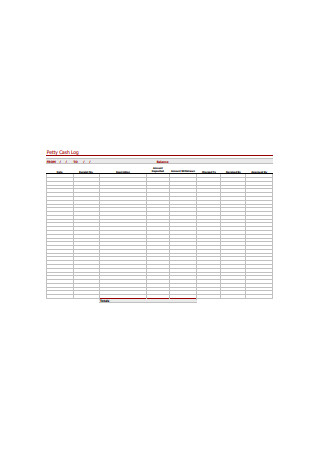
Petty Cash Log Sample
download now -
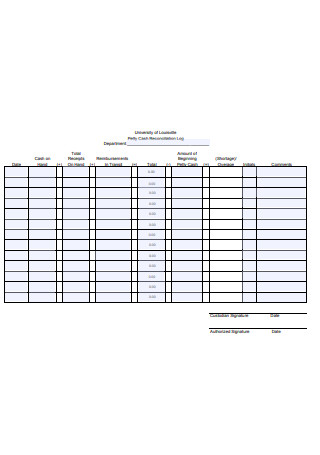
Petty Cash Reconciliation Log
download now -
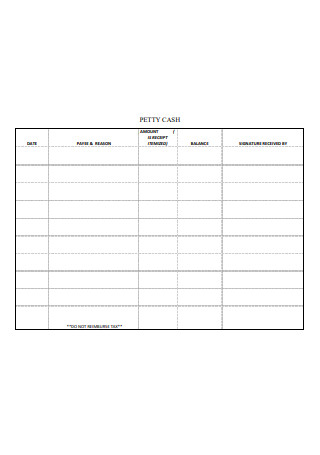
Sample Petty Cash Log Format
download now -
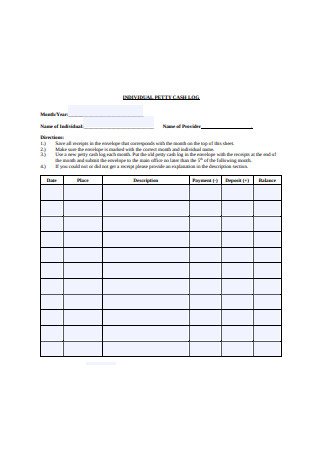
Individual Petty Cash Log
download now -
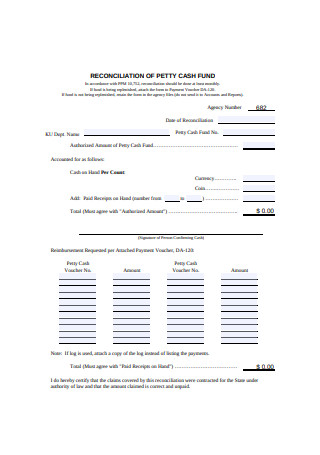
Reconciliation of Petty Cash Fund Log
download now -
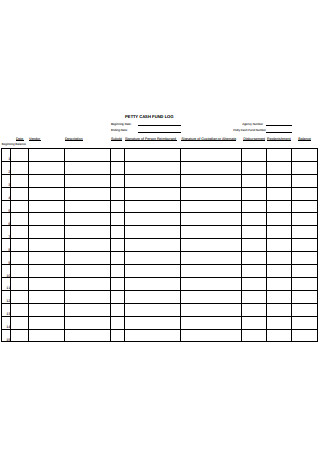
Basic Petty Cash Fund Log
download now -
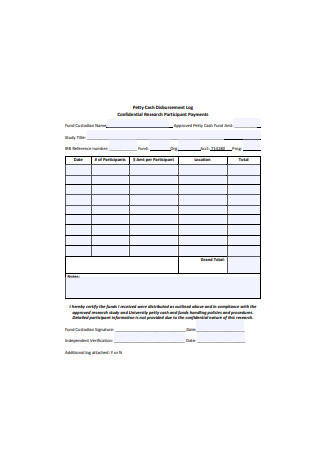
Sample Petty Cash Disbursement Log
download now -
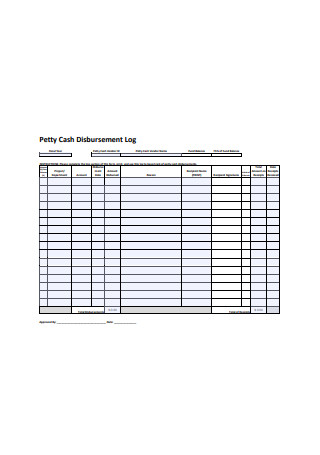
Standard Petty Cash Disbursement Log
download now -

Petty Cash Request Log
download now -
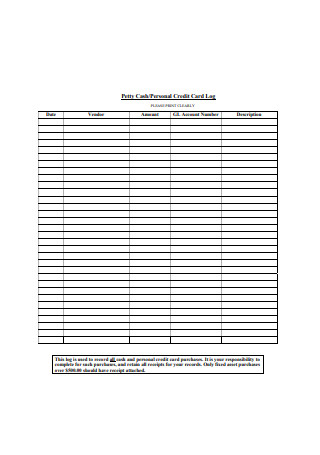
Petty Cash Log Example
download now -
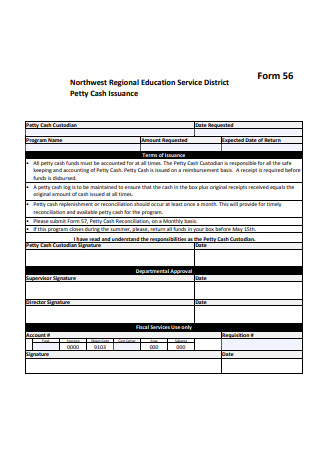
Sample Petty Cash Log Form
download now -
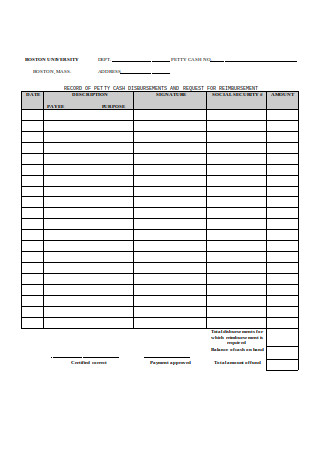
Simple Petty Cash Log
download now -
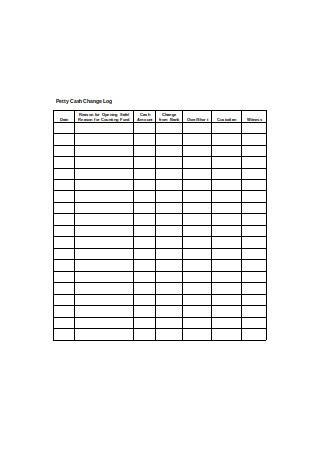
Petty Cash Change Log
download now -

Standard Petty Cash Fund Log
download now -
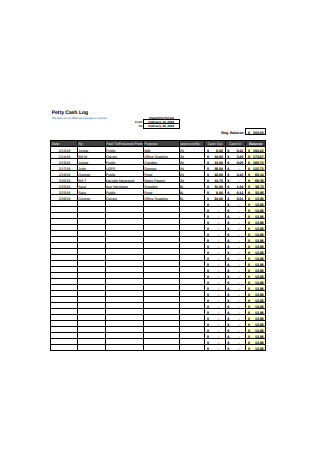
Basic Petty Cash Log
download now -
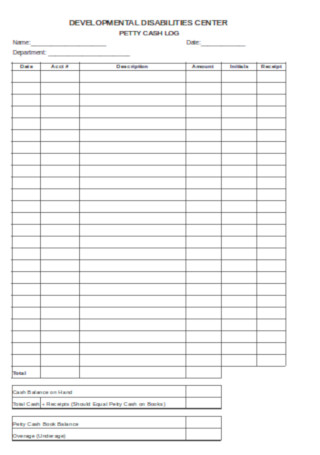
Formal Petty Cash Log Template
download now
FREE Petty Cash Log and Form s to Download
21+ Sample Petty Cash Log and Forms
Petty Cash Log and Forms: What Are They?
The Basic Parts of a Petty Cash Log
How to Make a Petty Cash Log and Form
FAQs
How much is the average petty cash fund?
What are the types of petty cash logs?
Is petty cash considered a cash equivalent?
Petty Cash Log and Forms: What Are They?
Petty cash refers to a tiny amount of cash that organizations can use for miscellaneous or small expenses. Since it is petty, that means you can pay for the smallest expenses right away without needing to issue a check. Meanwhile, a petty cash log or form is the official spreadsheet or document used to track all the small expenses spent via petty cash. The petty cash log makes it easier to write a company’s financial statement from how much money was spent in a particular timeframe, what they were spent for, and other crucial data.
It has been reported that petty cash expenses often include office supplies, food and drinks, employee reimbursements, and delivery or postage fees.
Meanwhile, Investopedia said that most companies keep around $100–$500 for their petty cash fund.
Why Is a Petty Cash Log Important?
A petty cash log is important when companies prepare their own petty cash fund. This small amount of cash will likely be used for miscellaneous transactions. But how sure are you that the petty cash was used appropriately as intended? Without documenting what was spent or how much money was used, some sneaky employees might use the petty cash for personal expenses rather than work-related expenses. That means a company could lose profit as tiny bits of money will be used for unnecessary transactions. Hence, petty cash logs and forms are reliable proof of transactions.
Also, bear in mind that petty cash is ready for payment anytime, meaning you literally have cash on hand to pay for a taxi fare, restaurant meal, office equipment repair, or any other purpose without using your own money. So it can be a bit tempting to just use it for any reason. For example, you might treat your employees at least $60 from the petty cash per month for the monthly business meeting’s meal. When you look at the bigger picture, that means your business lost $720 a year. That is why jotting down all the data about petty cash transactions in one expense sheet—the petty cash log is essential to ensure you won’t be throwing money that easily.
The Basic Parts of a Petty Cash Log
A standard petty cash log is known to have a table and labeled columns. And your goal is to fill in the rows to record every transaction-driven data using petty cash. But what exactly are the parts of a petty cash log? In this section, you will learn about the basic parts of a petty cash log or form.
How to Make a Petty Cash Log and Form
It is a challenge if you don’t have enough resources or proof regarding all petty cash expenses. That is because you might forget about the details on what to input for your petty cash log. Thus, bills and receipts must not be forgotten as they are useful references on what to write in the log. And when it comes to making the petty cash log and form, the process is a lot easier. You only need to observe these five steps:
Step 1: Set Clear Rules and Conditions about Petty Cash
First things first, introduce the petty cash rules and conditions to the whole members or employees of an organization. This is where you decide a reasonable amount of the monthly or annual petty cash fund, what transactions are allowed or prohibited for petty cash, and who is qualified to spend the petty cash. Most importantly, encourage everyone who will use the petty cash to keep every receipt used per transaction and record all the details in the petty cash log sheet, which you will be making later on. As everyone is familiar with the rules, everyone would know what to do in logging already.
Step 2: Pick a Sample Petty Cash Log and Form
In creating petty cash logs and forms, you will surely find it easy by using sample templates. And you can see all the sample petty cash logs and forms above this article. Each sample is easy to use and customizable. You can add as much data as you want to the form and you may go for either the PDF, MS Word, or Excel for the format. Also, petty cash logs are printable so you can make as many copies as you want. And if you want a soft copy, you can do that as well. Now that you won’t need to make petty cash logs from scratch, producing this document won’t stress you out for sure.
Step 3: Complete the Parts of a Petty Cash Log
From the title to the total cash left, you already know about the basic parts of petty cash logs. Your next task is to ensure you got every relevant part covered in your log as well. Maybe you have no column for purpose of transaction, balance, and other examples. Those parts are supposed to complete your petty cash log’s details in the first place. And your labeling of every column must be crystal clear so no one gets confused in navigating which parts to write down the appropriate details in the document.
Step 4: Organize the Details and Format
The key to a user-friendly and easy-to-understand document is when its format and details are highly organized. So make sure your log is organized appropriately too. That means you have given enough space for logging, correct labels for the tables, and more. You can even add another chart to arrange the data or include additional instructions for anyone who logs the document. Come up with a final evaluation until you are wholly confident that everything is well put together.
Step 5: Update the Log from Time to Time
Once you have made a proper petty cash log, the challenge lies in updating it regularly. It is expected that you won’t use all petty cash funds in one transaction anyway. So on every date you make a petty cash transaction, jot down the details in the log. The moment you forget to write on the log, even for one time, is usually when records and calculations relating to petty cash transactions start going wrong. Hence, be responsible for updating the sheet, especially if logging there is your assigned task.
FAQs
How much is the average petty cash fund?
It was reported that the majority of companies keep at least $100–$500 of petty cash funds. But at the end of the day, it still depends on the company of how much they are willing to prepare for petty cash. Oftentimes, big companies have bigger petty cash funds than those from small businesses.
What are the types of petty cash logs?
Petty cash logs consist of four main types. These are the simple, columnar, analytical, and imprest petty cash logs.
Is petty cash considered a cash equivalent?
Petty cash itself is actual money so it is not cash equivalent. Cash equivalents are for liquid securities and similar assets converted into cash. But petty cash is already part of the bills or coins category.
Since petty cash only covers a small amount of money to cover minor business expenses, then it is very easy to use. It is so simple that it could also be easily abused where some employees could steal the funds for nonbusiness purposes. Hence, you should always have a streamlined tool to write or track all the details about the petty cash fund. And that is just what a sample petty cash log and form can promise you. Secure and track your company’s petty cash expenses now!
